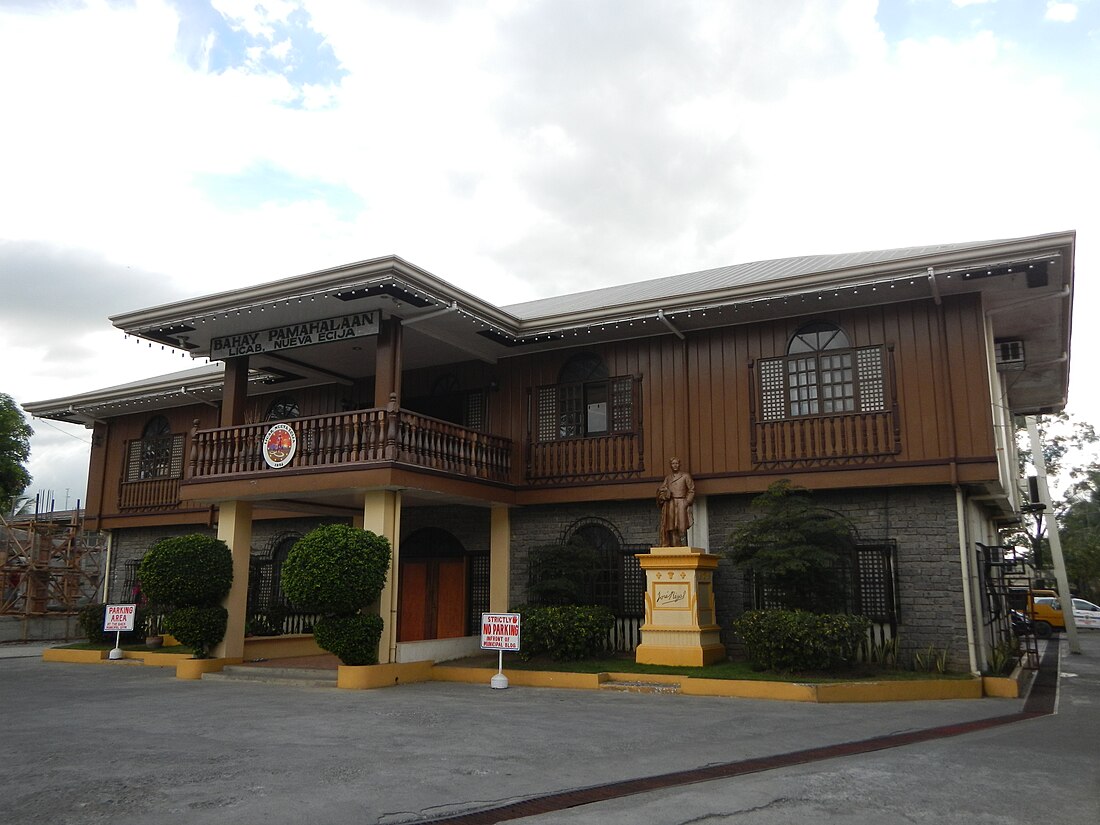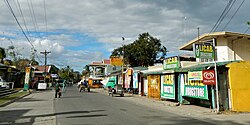Top Qs
Timeline
Chat
Perspective
Licab
Municipality in Nueva Ecija, Philippines From Wikipedia, the free encyclopedia
Remove ads
Licab, officially the Municipality of Licab (Tagalog: Bayan ng Licab; Ilocano: Ili ti Licab; Pangasinan: Baley na Licab), is a municipality in the province of Nueva Ecija, Philippines. According to the 2024 census, it has a population of 29,590 people.[5]
This article needs additional citations for verification. (October 2012) |
Remove ads
History
Summarize
Perspective
Licab was a sitio under the municipality of Aliaga and was known as "Pulong Samat". A wooded area surrounded by rivers and streams, it was then inhabited by thirty families consisting of Ilocanos, Tagalog, and relatives of the Esguerras from the Ilocos Region. The Esguerra brothers later arrived from San Nicolas, Ilocos Norte[6] and lived with the locals.
Don Dalmacio, one of the Esguerra brothers, led the clearing of the vast grasslands and brushwood with his brothers and the locals, subsequently cultivating the area with a bountiful harvest.
Due to the increase in the population of Pulong Samat, Dalmacio directed the establishment of a "gunglo" which served as Pulong Samat's council or government. The council then worked to change the name of Pulong Samat and later used "Licab" which came from the Ilocano saying "kaskada agliklikab ti ani ti pagay da" which means "the collected rice is flowing", the word likab is the Ilocano term of "flowing".
In 1882, led by Don Dalmacio, the local heads of the barrios of Santa Maria, Licab, Bantog and neighboring sitios, presented a petition to the civil administration of the Spanish government in the Philippines for the establishment of a separate and independent municipality from the Municipality of Aliaga.
After more than ten years and having fulfilled the requirements prescribed by the leaders of the Spanish government in the Philippines, the order to establish the Municipality of Licab was adopted under the leadership of the Governor General Ramón Blanco and took into effect on March 28, 1894.[7]
Remove ads
Geography
Summarize
Perspective
About 155 kilometres (96 mi) north of Metro Manila, Licab lies in one of the lowest portions of the province with an average elevation of 24 metres (79 ft),[8] experiencing flooding in all but one of its 11 barangays during rainy season.
Barangays
Licab is politically subdivided into 11 barangays, as shown below. Each barangay consist of puroks and some have sitios.
Climate
Remove ads
Demographics
Economy
Poverty incidence of Licab
10
20
30
40
50
2000
49.76
49.76
2003
27.61
27.61
2006
22.20
22.20
2009
25.52
25.52
2012
16.33
16.33
2015
18.62
18.62
2018
7.65
7.65
2021
11.72
11.72
Source: Philippine Statistics Authority[16][17][18][19][20][21][22][23]

Agriculture has remained the prime industry of the municipality. Agricultural lands devoted to various agricultural activities cover about tens of thousands hectares out of the total provincial area of 550,718 hectares. Rice is still the prime crop of agricultural development and programs. Palay production in the town is boosted by a large network of irrigation facilities and other appurtenant structure.
Live stock production of piggery and poultry were the second agricultural income source in this municipality. Most of the residence were considered to be backyard raisers. Meat products sold in the public market were produced and raised locally.
Remove ads
Education
The Licab Schools District Office governs all educational institutions within the municipality. It oversees the management and operations of all private and public, from primary to secondary schools.[24]
Primary and elementary schools
- Ablang Elementary School
- Bantug Na Munti Primary School
- Bardias Elementary School
- Don Dalmacio Primary School
- Licab Central School
- Linao Elementary School
- New Life in Christ Academy
- Parson Elementary School
- San Casimiro Elementary School
- San Cristobal Elementary School
- San Jose Elementary School
- St. Christopher Academy
- Sta. Maria Elementary School
- Tabing Ilog Elementary School
- Villarosa Elementary School
Secondary schools
- Exequiel R. Lina National High School
- Sta. Maria National High School
Remove ads
Notable personalities
- Vic Manuel, basketball player
- Manuel Tinio, army brigade gerenral
References
External links
Wikiwand - on
Seamless Wikipedia browsing. On steroids.
Remove ads










